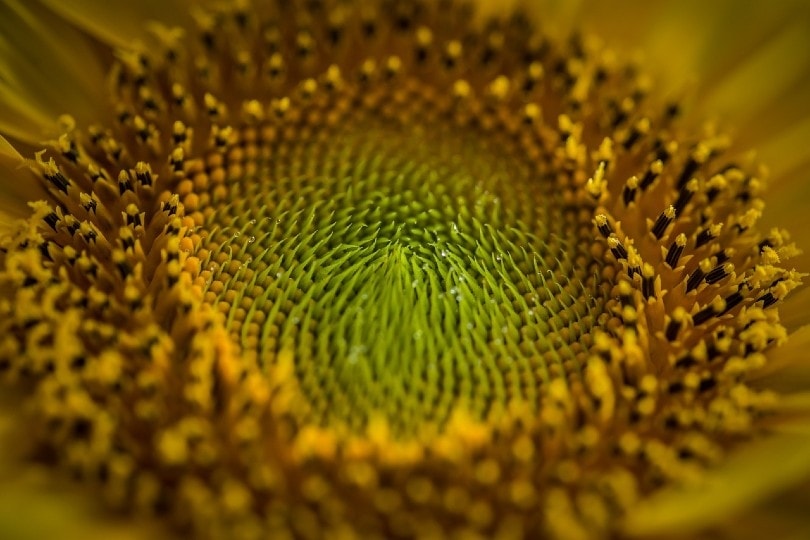What Does Pollen Look Like Under a Microscope?
Last Updated on

If you are like millions of other people, you may experience some uncomfortable allergy symptoms several times during the year. One of the major allergens that cause these symptoms is pollen. Sometimes, you can see pollen floating through the air in large patches, but not always.
The best way to see pollen in detail is to look at it under a microscope. Unfortunately, most people don’t just have a microscope sitting on a shelf! In this article, we will look at what exactly pollen is and how you can expect it to look under a microscope. We’ll also review what you need and how you can look at pollen yourself.

What Is Pollen?
Simply put, pollen is a substance that comes from seed plants and assists in reproduction. The male gametes (sperm cells) are produced by the pollen. When these gametes land on compatible female cones or pistils, germination results.
Clumps of pollen are visible to the naked eye. However, to see any details of the individual pollen grains, one would need to look at it under a microscope or otherwise magnify the size of it.

How Does it Look Under a Microscope?
There is no single way that pollen looks because it actually varies in shape, size, and color between various species. Some common characteristics you’ll notice under a microscope could be the pollen from pines, spruce, or fir having wings, or the pollen grains from a forget-me-not being only 2.5–5 micrometers in diameter.
Why Does Pollen Cause Allergies?
The answer to why we experience allergies when there’s pollen in the air can be found within our immune systems. The job of this system in our bodies is to fight off any foreign intruders, harmful viruses or bacteria, for example.
When pollen causes an allergic reaction, it’s because your immune system mistakes the pollen for a threat to the body. In response to the “threat,” your body begins creating histamine, a chemical that fights the pollen. This is why many allergy medicines contain antihistamine medication.

Everything You Need to Look at Pollen
Since there are many different pollen grains with unique looks, it’ll be more useful to know what you need to see them under a microscope.
For this article, we’ll discuss techniques specific to a stereo microscope because it’s one of the most commonly used microscopes.
- Needle, pipette tips, and tweezers (for pollen collection)
- Stereo microscope
- 50% glycerin
- Microscope slides
- Alcohol
How to Look at Pollen Under a Microscope
Before viewing the pollen under the microscope, it’s a good idea to treat some and view it alongside an untreated specimen. This enables you to easily compare differences.
- Use the alcohol to wash the grains of pollen—this removes the oily coating on the grains
- Spread the treated pollen on a slide
- Add 50% glycerin—this causes the grains to swell to make it easier to view them
- Add the untreated pollen alongside

Final Thoughts
This is only one method of viewing pollen under a microscope. For example, each microscope—compound or electron—will have a slightly different operation. To view pollen under any other microscope, simply follow the typical viewing procedure for the particular microscope you’re using.
Pollen is a fascinating part of nature. If you’re exploring it with a microscope, make sure you look at several varieties so you can see how diverse and unique pollen structures are between species.
Featured Image Credit: emkanicepic, Pixabay
About the Author Shea Cummings
Shea Cummings is a passionate content writer who believes that the power of words is immeasurable. He leverages years of experience in various trades such as carpentry, photography, and electrical to bring his articles to life. His goal is to provide his readers with information that delights and informs. When he's not writing you can find him spending time in the outdoors or playing some Minecraft on the Xbox with his wife and two sons.
Related Articles:
How to Clean a Refractor Telescope: Step-by-Step Guide
How to Clean a Telescope Eyepiece: Step-by-Step Guide
How to Clean a Rifle Scope: 8 Expert Tips
Monocular vs Telescope: Differences Explained (With Pictures)
What Is a Monocular Used For? 8 Common Functions
How to Clean a Telescope Mirror: 8 Expert Tips
Brightfield vs Phase Contrast Microscopy: The Differences Explained
SkyCamHD Drone Review: Pros, Cons, FAQ, & Verdict
